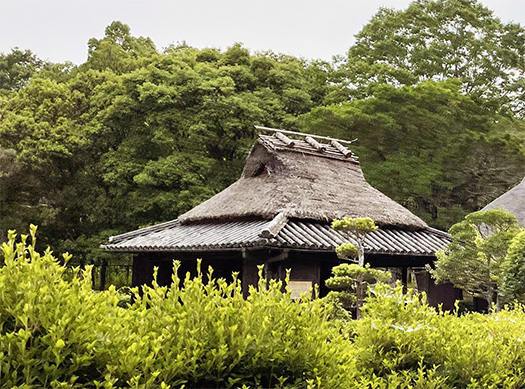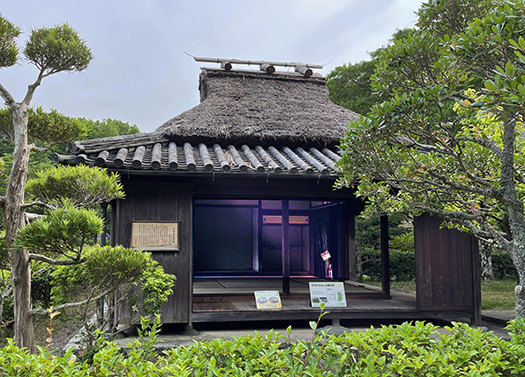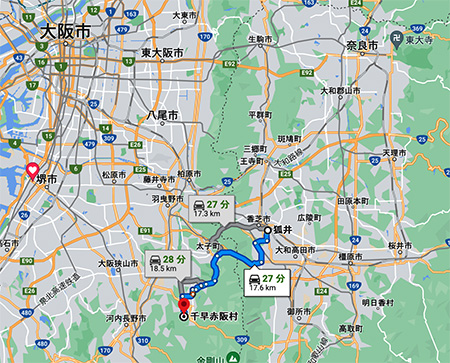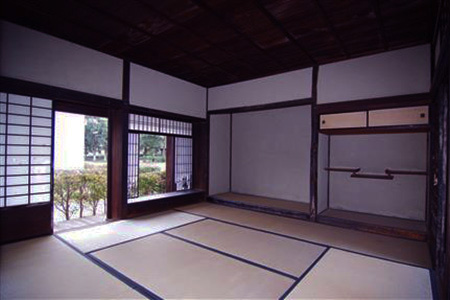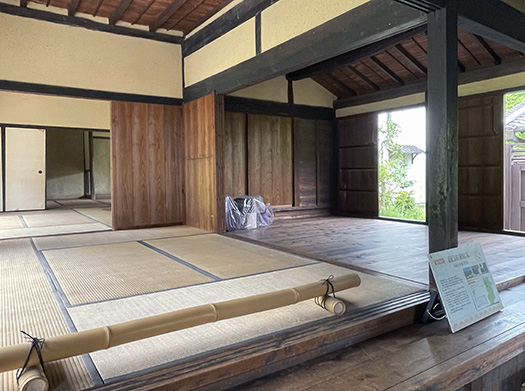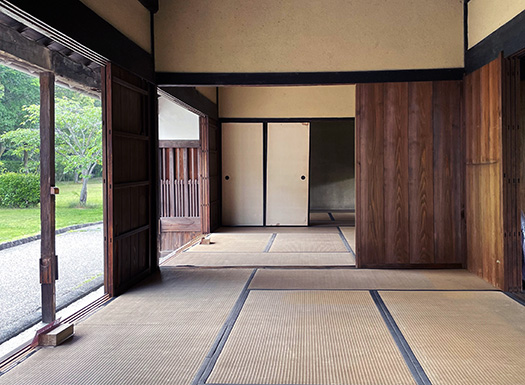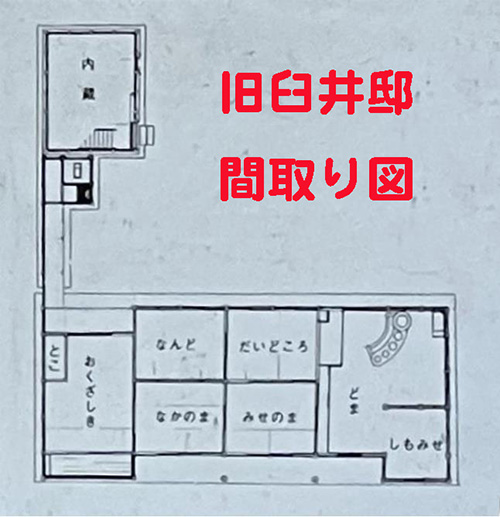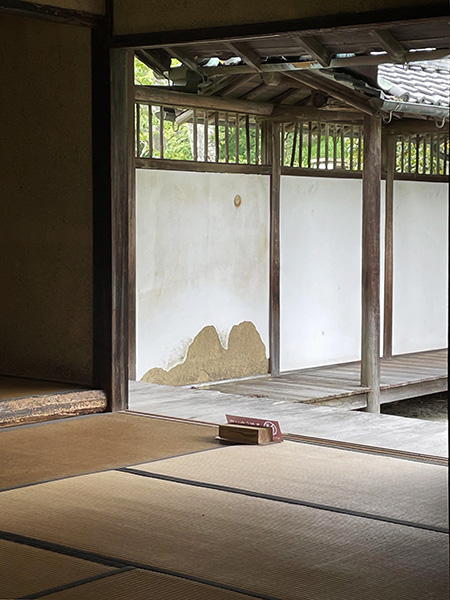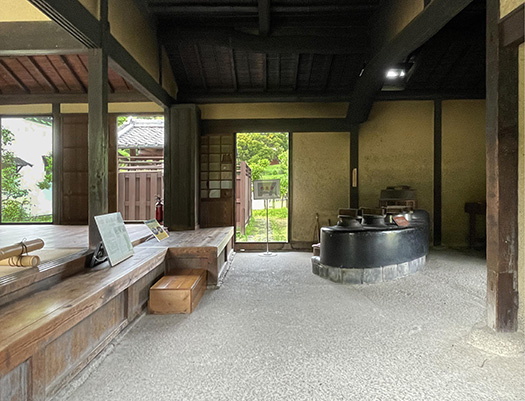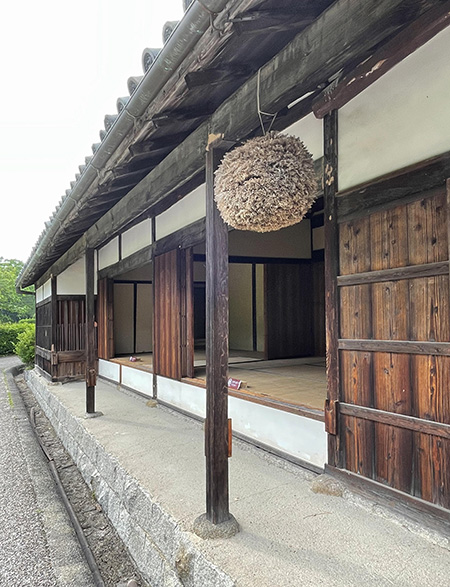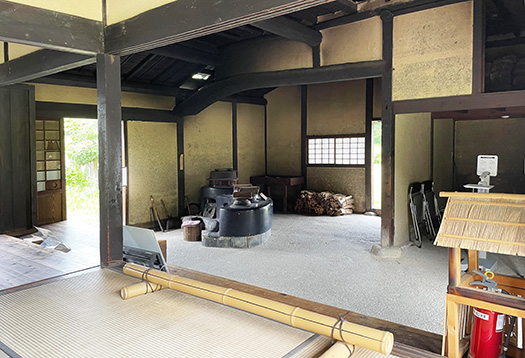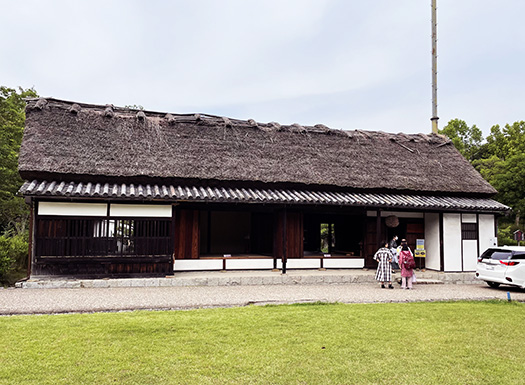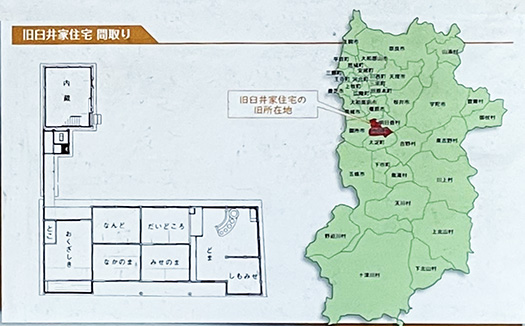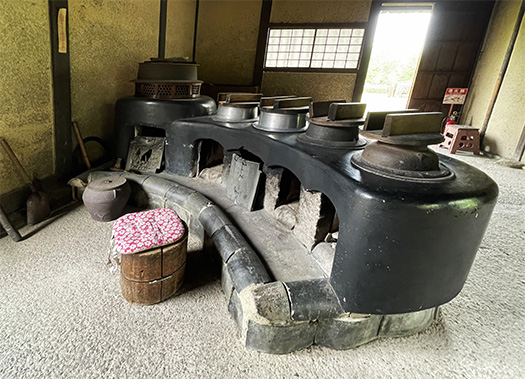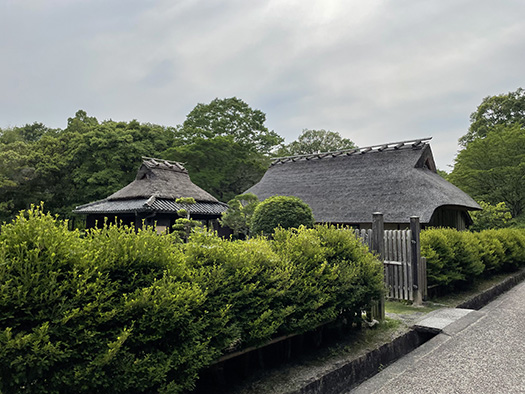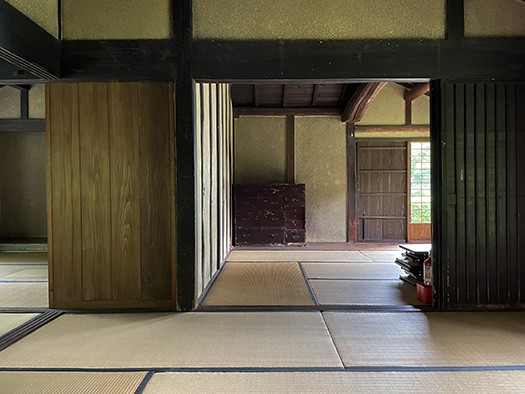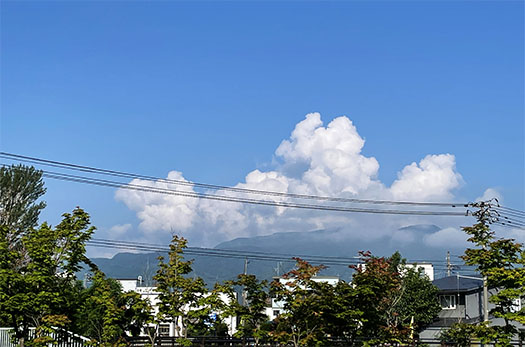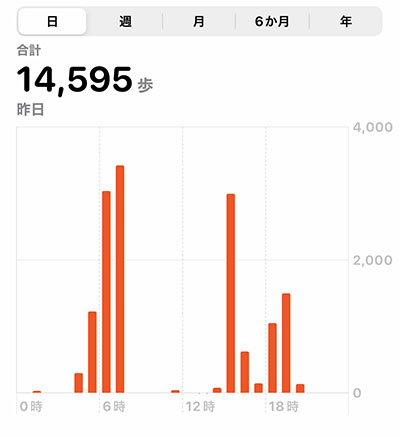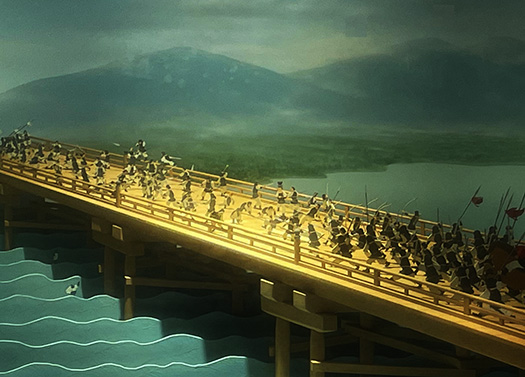
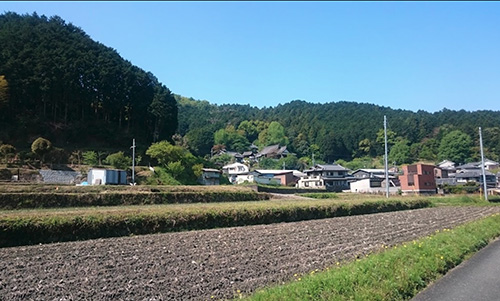
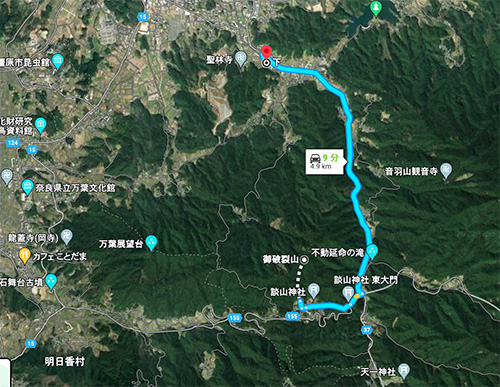
奈良県の人口は132.2万(2020年)、うち奈良市は36万人ほど。
奈良市は県の最北部で淀川方面に向かって開いて行く地域。
そして県の北西側平野部・奈良盆地にほとんどの人口が集積している。
それ以外は紀州に向かって山岳地帯が県の大部分を占めている。
歴史過程で人口が増加していって国家と首都機能が大きくなっていくとともに
やがて京都に首都機能移転していったのには蓋然性があるのでしょう。
いまの奈良県には「国のまほろば」という雰囲気が漂う。
多武峰と書いて「とうのみね」と読むのだけれど、
一種独特の語感と、麻呂麻呂しい歴史感が伝わってくる山の名。
たくさんの山の峰が連なっている、というような意味合いかと思えるが、
調べてみると以下のような地名由来。
〜奈良県桜井市南西の山。藤原鎌足が中大兄皇子と蘇我氏討伐を談合した所で、
のち鎌足の子定慧が父の遺骸を山上に移し妙楽寺を建てた。
明治維新に際して談山神社となり今に至る。「関西の日光」とも。
(藤原高光が妻子を捨て多武峰に草庵を結んだ『多武峰少将物語』平安後期)〜
こういった深い山中で秘密に乙巳の変での蘇我氏への蜂起は策謀された。
そのことが藤原氏の興隆につながって家祖を弔う聖地とさせた。
盆地から山並みが連なる多武峰への入口にこの「旧萩原家」は位置していた。
農家住宅ではあるが長く地域有力土豪のような存在か。
江戸期には「組頭」を永年務めていたということ。
写真はGoogleで住所入力したら表示される画像でした。
そのなかで「高台の農家」を感じるアングルを選んでみた次第。
いまは大和郡山市に移築保存された住宅だけれど、
ながく建ち続けていた周辺環境を追体験するにはふさわしい画像ではないか。
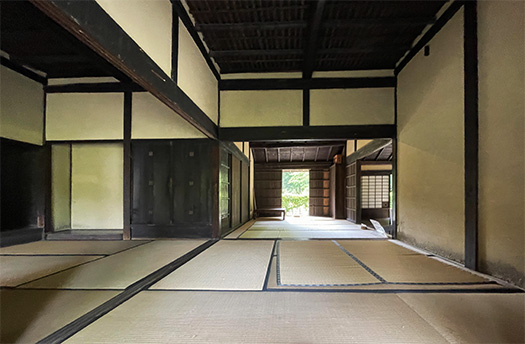
上の写真が「内観」の一枚。
よく農家について江戸期には「虐げられた存在」のような歴史感がある。
武家が最上位階級でそれ以外は卑賤な存在というような史観。
しかし探訪を重ねてくると、武家住宅などは「食わねど高楊枝」であり、
農家住宅の実質経済支配層ぶりの方が強く感じられる。
江戸幕府体制とは、ひたすら農業生産経済依存のものであり、
武家が無能な経済政策を取れば即座に強訴するパワーを感じる。
この萩原家は上農階層ではあるだろうけれど、家具類の必要の少ない時代、
このような広大な「広間」を持っていることに驚く。
むしろ地域経済の主体としての矜持を感じさせてくれる。
農とはそもそも自給自足可能な生き方であり
むしろ社会体制の基盤として自信に満ちているように感じるたたずまい。
English version⬇
High-altitude farmhouse in the southeast of the Nara Basin to Touno-mine, Yamato Historical Testimony-23
The dignified lifestyle of the foundational members of agricultural society. The Japanese agricultural social system that was created from the Nara Basin. ・・・・・.
The population of Nara Prefecture is 1,322,000 (2020), of which Nara City has about 360,000.
Nara City is the northernmost part of the prefecture, an area that opens up toward the Yodo River.
Most of the population is concentrated in the Nara Basin, the northwestern plains of the prefecture.
The rest of the prefecture is mountainous and mostly located toward Kishu.
Over the course of history, as the population grew, the nation and its capital grew larger and larger.
There is a probability that the capital functions were eventually relocated to Kyoto.
Nara Prefecture today has the atmosphere of a “national mahoroba”.
The word “Touno-mine” is written as “Touno-mine.
The name of the mountain conveys a kind of unique feeling of the word and a sense of history.
The name may mean “a chain of many peaks.
However, when I looked up the name, I found the following information about the origin of the place name.
〜A mountain located southwest of Sakurai City, Nara Prefecture. It was the place where Kamatari Fujiwara and Prince Nakataio discussed the defeat of the Soga clan.
Later, Kamatosoku’s son Sadatoshi moved his father’s remains to the top of the mountain and built Myorakuji Temple (and later, a branch temple of Eizan Mudoji Temple).
At the time of the Meiji Restoration, the temple was renamed Danzan Shrine, and has remained so to this day. It is also called “Nikko of Kansai.
(The story of Takamitsu Fujiwara, who abandoned his wife and children and built a hermitage in Touno-mine, is told in the late Heian period.
It is clear that the uprising against the Soga clan in the Otomi Incident was plotted in secret deep in the mountains like this.
This led to the rise of the Fujiwara clan, which made the area a sacred place to mourn their ancestors.
The “Old Hagiwara House” was located at the entrance to Tabu Peak, a mountain range stretching from the basin.
Although it is a farmhouse, it has long been a prominent local landowner.
In the Edo period, the family served as “Kumigashira” for many years.
The photo was an image that appeared when I entered the address on Google.
I chose the angle that gives the impression of a “farmhouse on high ground.
The house has been moved to Yamatokoriyama City and preserved.
I think it is a suitable image to relive the surrounding environment where the house has been standing for a long time.
The photo above is one of the “inside view”.
There is often a sense of history about farmers as if they were “oppressed beings” during the Edo period.
The samurai family was the highest class, and all others were considered lowly.
However, as we continue to explore the history of farm houses, we find that samurai residences were the “high branches of the family” and that the farmers were the real economic rulers.
The farmer’s house is more like a real economic ruling class.
The Edo shogunate system was based solely on an agricultural production economy.
The Edo shogunate system was based solely on agricultural production and economy, and if a samurai family made an incompetent economic policy, the power to sue them would be felt immediately.
The Hagiwara family may have been upper class farmers, but in an era when there was little need for furniture, the Hagiwara family was not able to afford to buy furniture.
I am surprised that the Hagiwara family has such a vast “hall” at a time when there was little need for furniture.
In fact, it gives us a sense of their pride in being the mainstay of the local economy.
Farming is a way of life that allows for self-sufficiency.
The appearance of the house is rather confident as the foundation of a social system.
Posted on 7月 19th, 2022 by 三木 奎吾
Filed under: 住宅マーケティング, 歴史探訪 | No Comments »


